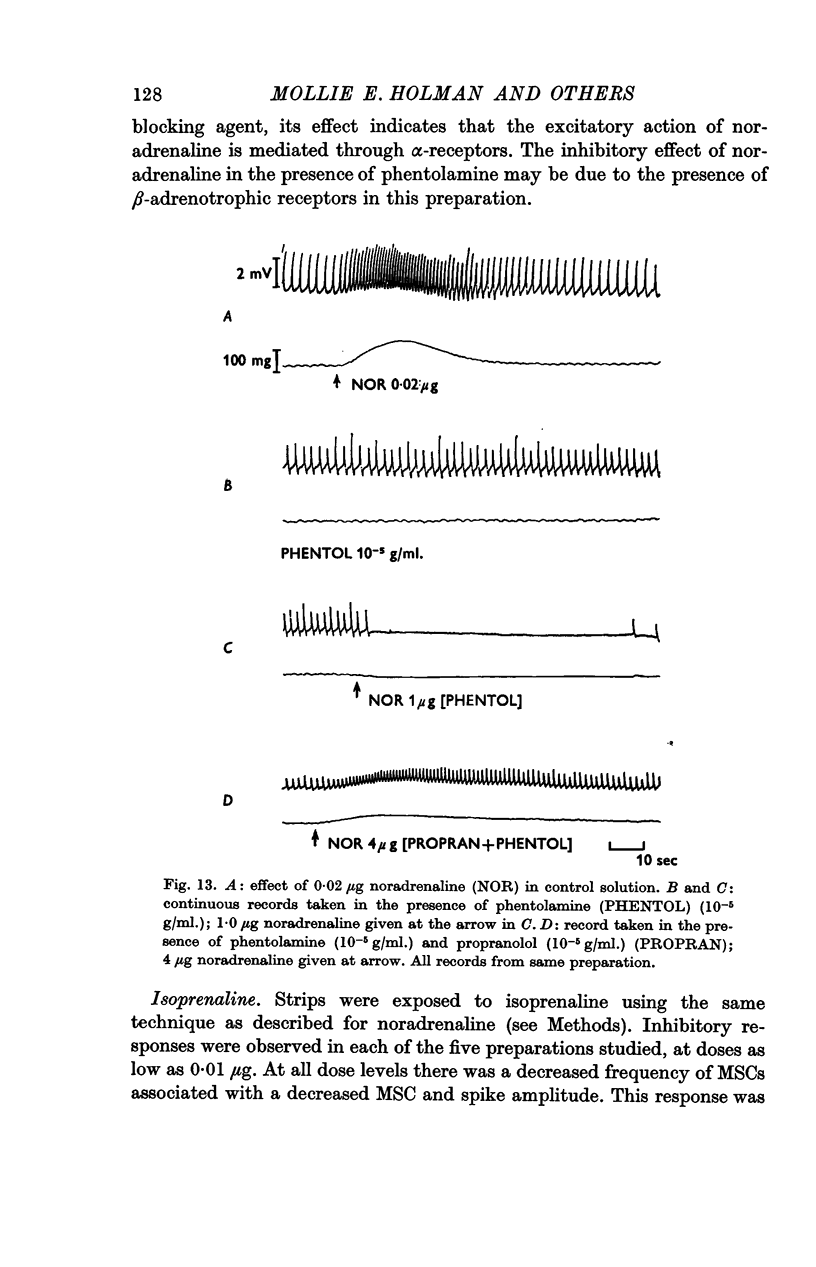Abstract
1. The morphology of the smooth muscle of the rabbit portal vein and its innervation were studied with fluorescence and electron microscopy. Two layers of smooth muscle were observed in the tunica media: an inner layer of circularly arranged muscle cells and an outer layer consisting of bundles of smooth muscle cells arranged in a near longitudinal direction. The membranes of neighbouring smooth muscle cells were occasionally fused to form `tight junctions'.
2. Bundles of non-myelinated nerve fibres were observed in the adventitia, and between bundles and layers of smooth muscle cells in the media. Studies on longitudinal sections with fluorescence microscopy revealed a network of varicose noradrenergic axons.
3. Electrical and mechanical activity was recorded from longitudinal strips of smooth muscle from the media of the vein with a sucrose-gap apparatus.
4. The preparation was spontaneously active under minimal resting tension (less than 150 mg) and at temperatures above 28° C. Slow depolarizations led to a burst of spikes (multi-spike complexes), which corresponded to rhythmic contractions. In 10% of preparations, the interval between multi-spike complexes showed a slower depolarization, suggesting the record was from a pace-maker region.
5. The frequency of spontaneous activity (3-27 beats/min) was very sensitive to changes in temperature and tension.
6. Noradrenaline in low doses (0·01 μg) caused an increase in frequency of the multi-spike complexes. Higher doses (0·1-0·3 μg) initiated continuous high-frequency spiking, while very high doses (0·6-2·0 μg) caused maintained depolarization.
7. Responses to repetitive electrical stimulation of the vein were qualitatively similar to those in response to exogenous noradrenaline. The relation between the mechanical response and the various parameters of stimulation was consistent with the stimulation of sympathetic nerve fibres in the wall of the vein.
8. The actions of isoprenaline, phentolamine and propranolol indicated the presence of α `excitatory' and β `inhibitory' adrenotrophic receptors on the smooth muscle.
Full text
PDF





















Images in this article
Selected References
These references are in PubMed. This may not be the complete list of references from this article.
- BULBRING E. Electrical activity in intestinal smooth muscle. Physiol Rev Suppl. 1962 Jul;5:160–178. [PubMed] [Google Scholar]
- Bennett M. R., Burnstock G. Application of the sucrose-gap method to determine the ionic basis of the membrane potential of smooth muscle. J Physiol. 1966 Apr;183(3):637–648. doi: 10.1113/jphysiol.1966.sp007889. [DOI] [PMC free article] [PubMed] [Google Scholar]
- Bennett M. R., Burnstock G., Holman M. E. Transmission from perivascular inhibitory nerves to the smooth muscle of the guinea-pig taenia coli. J Physiol. 1966 Feb;182(3):527–540. doi: 10.1113/jphysiol.1966.sp007835. [DOI] [PMC free article] [PubMed] [Google Scholar]
- Cuthbert A. W., Sutter M. C. The effects of drugs on the relation between the action potential discharge and tension in a mammalian vein. Br J Pharmacol Chemother. 1965 Dec;25(3):592–601. doi: 10.1111/j.1476-5381.1965.tb01783.x. [DOI] [PMC free article] [PubMed] [Google Scholar]
- DEWEY M. M., BARR L. A STUDY OF THE STRUCTURE AND DISTRIBUTION OF THE NEXUS. J Cell Biol. 1964 Dec;23:553–585. doi: 10.1083/jcb.23.3.553. [DOI] [PMC free article] [PubMed] [Google Scholar]
- Holman M. E., McLean A. The innervation of sheep mesenteric veins. J Physiol. 1967 May;190(1):55–69. doi: 10.1113/jphysiol.1967.sp008192. [DOI] [PMC free article] [PubMed] [Google Scholar]
- Kuriyama H., Osa T., Toida N. Effect of tetrodotoxin on smooth muscle cells of the guinea-pig taenia coli. Br J Pharmacol Chemother. 1966 Aug;27(2):366–376. doi: 10.1111/j.1476-5381.1966.tb01668.x. [DOI] [PMC free article] [PubMed] [Google Scholar]
- Rhodin J. A. The ultrastructure of mammalian arterioles and precapillary sphincters. J Ultrastruct Res. 1967 Apr;18(1):181–223. doi: 10.1016/s0022-5320(67)80239-9. [DOI] [PubMed] [Google Scholar]
- Tomita T. Membrane capacity and resistance of mammalian smooth muscle. J Theor Biol. 1966 Nov;12(2):216–227. doi: 10.1016/0022-5193(66)90114-7. [DOI] [PubMed] [Google Scholar]




